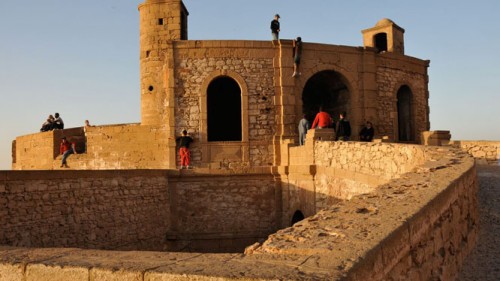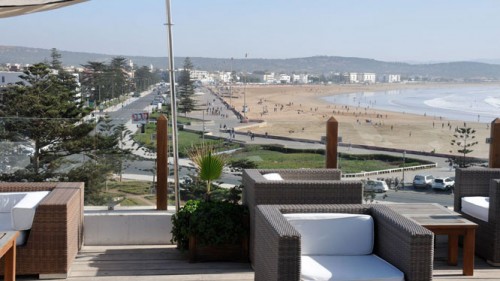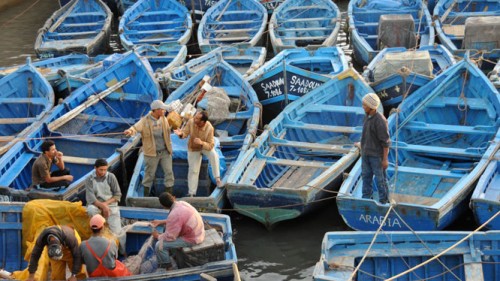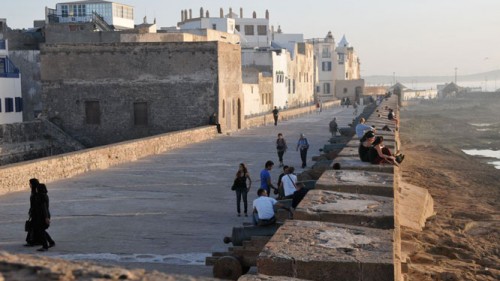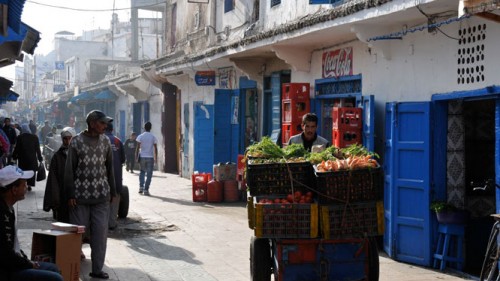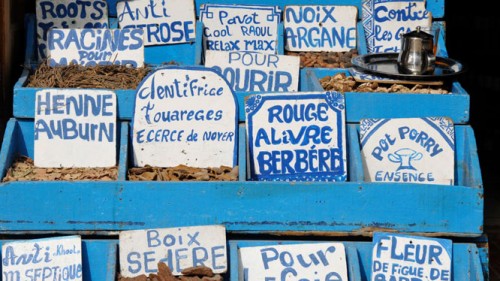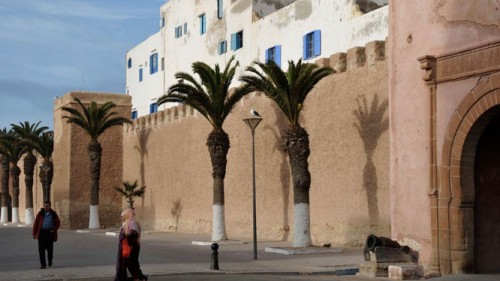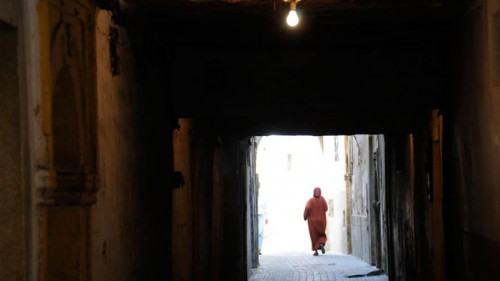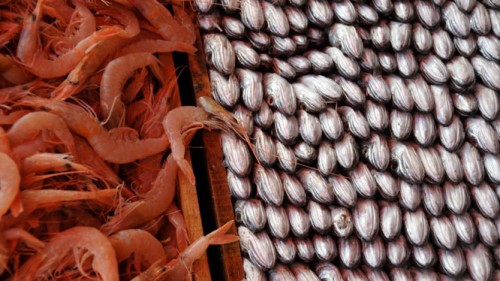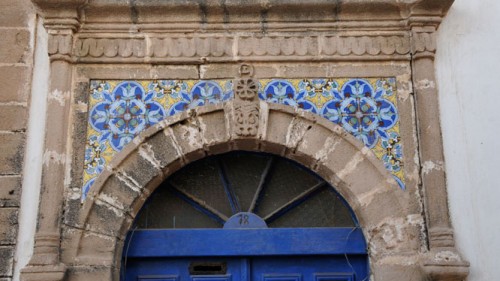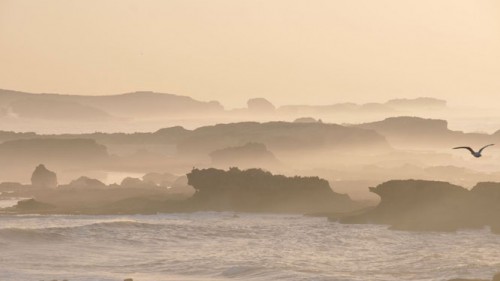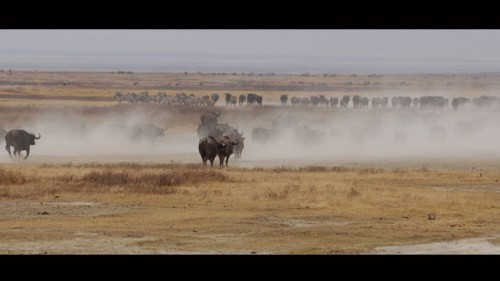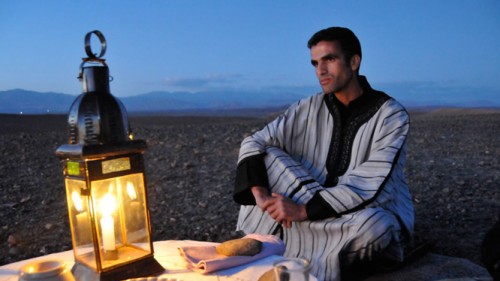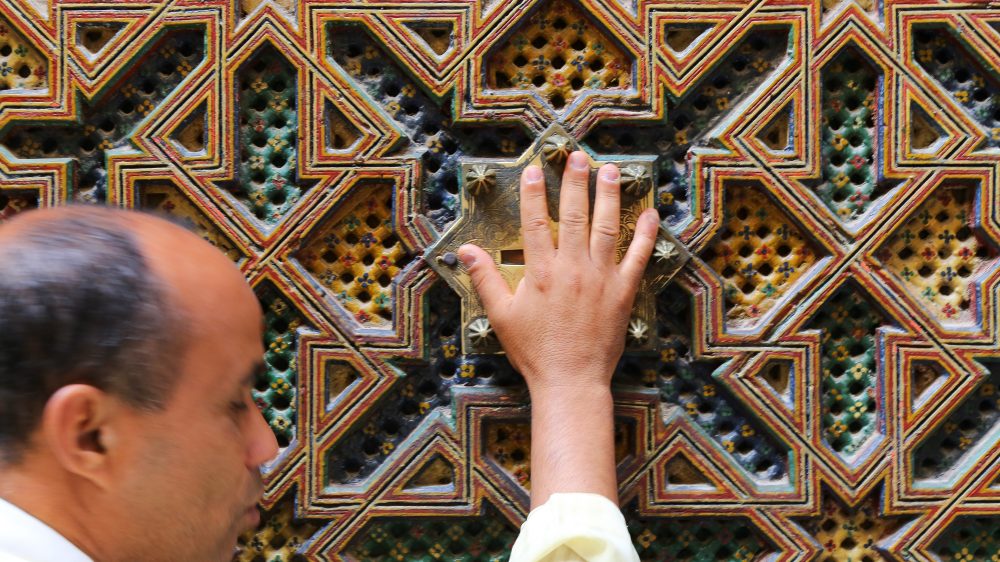The Old Souks and the Sea
Close your eyes (enough to allow for some mental visualization, but not so much that you can’t read this). Now, imagine that you’re standing on an 18th century rampart overlooking the sea. The air is humid and heavy, the sun warm like a pancake on your forehead.
Seagulls are swooping around, making noise, in their typical state of fuss. It smells. Not overpoweringly bad, but thick—a murky combination of fish and damp stone, with periodic hints of coffee, cedar and cat. Welcome to Essaouira.
As unappealing as all of that may sound, the coastal town of Essaouira (pronounced ‘essa-WEE-ra’) is one of Morocco’s most captivating places. Just a three hour drive west of Marrakech, this salty spot is a world away when it comes to character and feel. With its white buildings and bright blue doorways, Essaouira looks more Med than Moroccan. Given its long history as a prized port for everyone from the Romans to the Portuguese to the Spanish to the French, I suppose this makes sense. Grace to two thousand or more years of cultural layering, the town today is an interesting blend of Berber, Arab and European influences.
And the best way to soak it all up is simply to walk. There are no grand monuments per se, but a wonderful series of must-see (and smell) sights. Nothing is too far away and the more-or-less grid-like layout of the streets makes it easy enough to get found if you get lost. Start with a coffee in the main square, Place Moulay Hassan, the heart of the old town. Then stroll up the wide Avenue Oqba Ibn Nafi to the souks, where you’ll find fresh produce, nervous chickens, and spices galore. Once you’ve loaded up on argan oil (a local specialty with remarkable curative properties for both skin and hair), meander the musty streets of the mellah. Originally the town’s thriving Jewish quarter, the neighborhood has slowly drained of residents and now crumbles around the edges. For a breath of fresh air, find your way to the citadel, sit on a cannon and watch the rough Atlantic surf. Check out the small workshops under the ramparts, where craftsmen turn roots from native thuya cedar into marquetry boxes and furniture of staggering detail. And finally, as you walk to the beach for a casual seafood lunch at Chalet de la Plage (a classic), you’ll want to detour via the fishing port to see traditional wooden fishing boats being built.
Following your nose in Essaouira isn’t always easy, but for the curious, it’s totally intoxicating.
Charlie Scott is a Trufflepig partner and trip planner who just spent two weeks drinking argan oil in Morocco. His hair has never looked so full or silky.
